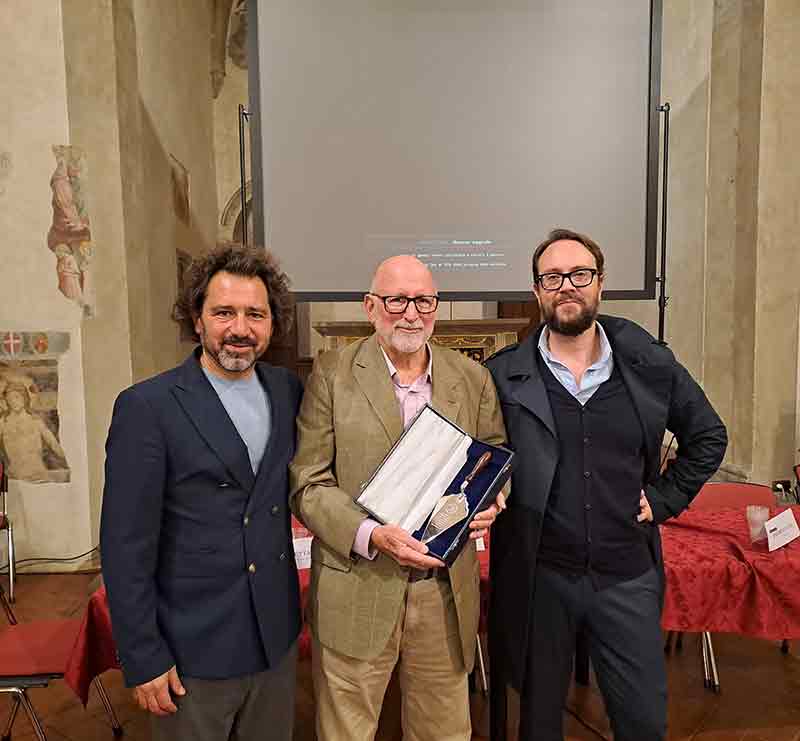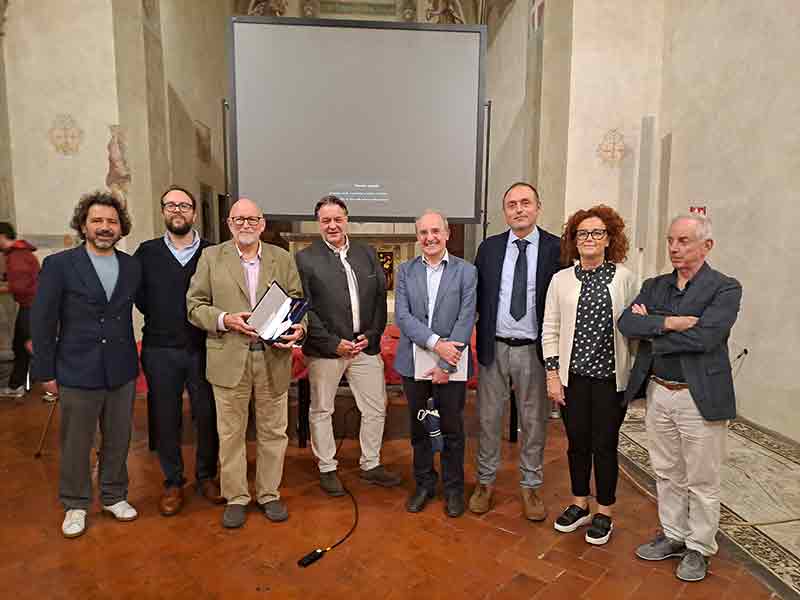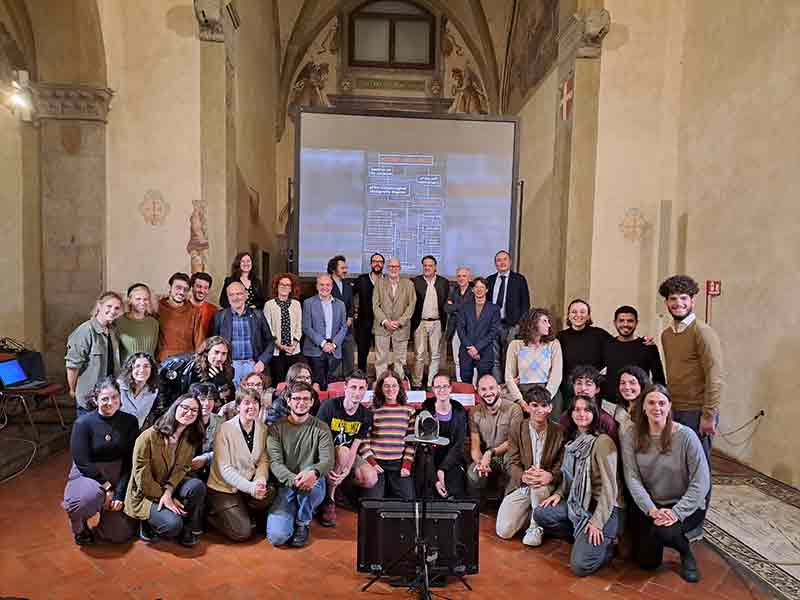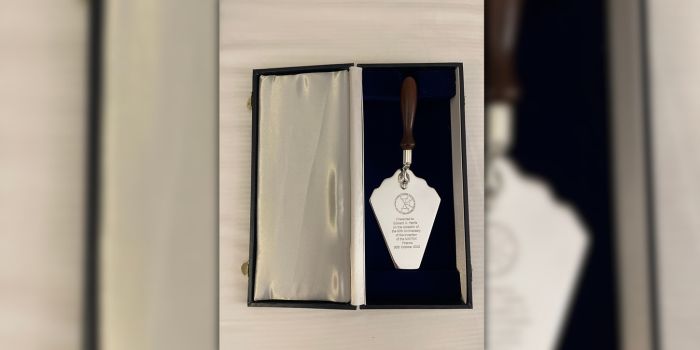Celebrating 50 Years Of The ‘Harris Matrix’
On October 30th, a conference entitled “Matrix 1973-2023” was held in Florence, Italy to celebrate fifty years of the Harris Matrix, invented in 1973 by Bermudian archaeologist and Founding Executive Director Emeritus of the National Museum of Bermuda, Dr Edward Cecil Harris.
A spokesperson said, “Dr Harris’ archaeological methodology revolutionised the field and set an industry standard for archaeological recording. The Harris Matrix provided archaeologists with a means to view stratigraphic sequences of archaeological sites in a diagram. He published his Matrix and findings in The Principles of Archaeological Stratigraphy in 1979. This book fundamentally changed the nature of archaeological studies and has been translated into 10 languages. It is free to download at www.harrismatrix.com.
“Every archaeological site is a unique time-capsule, recording the past in layers, and the Harris Matrix is the only universal way in which the temporal succession of a site can be displayed in relative time order. Dr Harris’ approach changed the archaeological stratigraphic paradigm from one dimension to four: depth of deposits, length and width of surface areas, and relative time sequence.
“With his new simplified method, these four dimensions are represented in the relationships of all the stratigraphic units through time allowing the investigation of complex sites. It has also been incorporated into a number of computerised recording systems and expanded its use in the analyses of buildings, rock art, and many other diverse archaeological situations where stratigraphic principles come into play.
“The Matrix 1973-2023 conference was held at Ancient Mediterranean and Near Easter Studies [CAMNES] in Florence where six leading archaeologists from Italy and Austria along with CAMNES students discussed the enduring impact of the Matrix and how it is still being used today for the management of archaeological data and interpretation of archaeological sites.”
Dr Federico Cantini, Director of the Specialization School in Archaeology of the University of Pisa shared the impact of the Harris Matrix, “The introduction, in 1973, and dissemination of The Harris Matrix were a revolution especially in archaeological practice and in archaeological thinking.
“The protagonists of the research were no longer art objects and monuments, but the stratigraphic sequence, with its physical relationships and temporal succession. In this way archaeology definitely moved away from antiquarian research and became history. Adopting the Harris Matrix represented a Darwinian “advantageous mutation,” that allowed to investigate complex sites, having a perfect tool not only for the management of large masses of data, but also for their interpretation. The archaeological excavations of the University of Pisa are, today, an opportunity to use Harris’ teaching and pass it on to the archaeologists of the future.”
Included on the panel was Dr Wolfgang Neubauer, Director of the Ludwig Boltzmann Institute for Archaeological Prospection and Virtual Archaeology [LBI ArchPro] in Austria, one of the foremost thinkers on archaeological stratigraphy in Europe. A colleague of Dr Harris’ since 1999, Dr Neubauer addressed new developments in the science of archaeological stratigraphy that have been aided by technological advancements of late years, saying, “The development of a new ‘Harris Matrix Composer’ software, which combines a stratigraphic sequence with an interval-based temporal model, demanded a review and update on stratigraphic theory. The theoretical concepts are the backbone for a comprehensive deduction of a universally applicable algorithm for stratigraphic excavation and respective complete digital documentation of all deposits and surfaces.”
Elena Strong, Executive Director of NMB shared, “After 50 years, the Harris Matrix shows no sign of diminishing in its value, and we are certain that it will continue to have an enduring impact on the field of archaeology. We should all be proud of our fellow Bermudian whose scientific work significantly affected archaeological practices worldwide for over half a century.”
Dr Edward Harris with the co-directors of CAMNES, Guido Guarducci and Stefano Valentini, showing the ceremonial trowel gifted to him on the occasion of the 50th anniversary of the Harris Matrix.
From left to right, Dr Edward Harris with Stefano Valentini [CAMNES], Guido Guarducci [CAMNES], Wolfgang Neubauer [Ludwig Boltzmann Institute for Archaeological Prospection and Virtual Archaeology], Paolo Liverani [Università di Firenze], Federico Cantini [Università di Pisa], Elisabetta Giorgi [Università di Siena] and Daniele Manacorda [Università degli Studi Roma III].
Speakers and students who participated in the seminar “Matrix 1973-2023″ in Florence, Italy, on 30 October 2023.
A ceremonial trowel—the icon for archaeologists—was presented to Dr Harris on the occasion of the 50th anniversary of the Harris Matrix.







That is quite an achievement, first I am hearing of it but that is very cool. Congrats Dr. Harris.